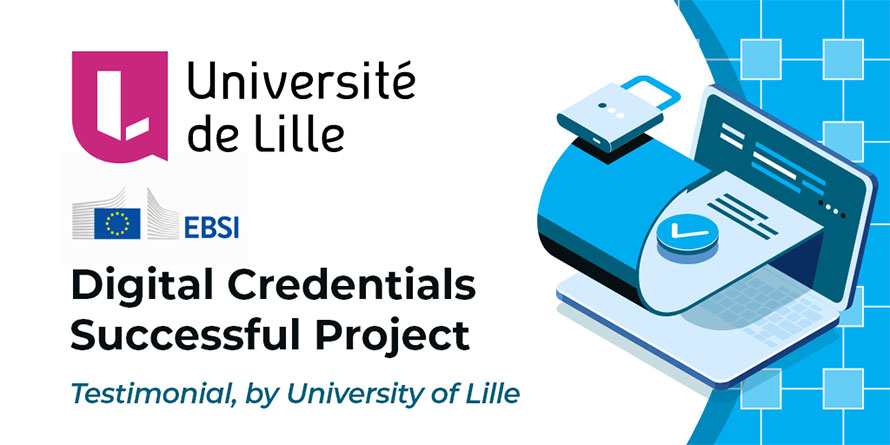At the invitation of the French team of the European Blockchain Partnership, the members of the DemAttestULille project “Dematerialized credentials for the University of Lille” and Fr.EBSI “France’s project within EBSI for 100% digital and verifiable diplomas” met for a webinar entitled “The Digital Transformation of the University of Lille’s Academic Services“.
We provide here a transcript of the discussion, which is a great document for anyone interested in the challenges of Micro Credentials and blockchain applications for education and academia.
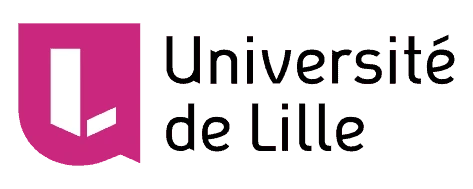
May 2021 – Implementation of a blockchain solution of Digital Credentials for all graduates of the University of Lille.
On May 28, 2021, in its Press Release, the University of Lille announced:
Starting in July, the University of Lille will deploy a digital certificate of achievement for all its graduates, using blockchain technology. No more copies of paper diplomas sent by email to recruiters, easily forged, and costly to verify and produce.
From now on, the students of the University of Lille will receive a link to display a digital certificate “with probative value” shortly after their graduation.
They will be able to send it to a company when applying for a job and link it on their Linkedin profile. This certificate, hosted on the university’s servers and based on blockchain technology, will give employers all the information to verify the authenticity of the diploma.
The system will be generalized starting in July 2021 to the 20,000 to 25,000 diplomas awarded annually by the university. While there have been occasional experiments, mainly with small classes in large schools, the University of Lille is the first in France to deploy it on such a large scale.
The institution is very involved in the deployment of digital infrastructures for trusted public services, based on blockchain technologies. In early 2021, it won a European invitation to tender to deploy such a European infrastructure in France and install a certification system, Fr.EBSI. The experience gained by the University of Lille will then be used by all higher education institutions.
By the end of October 2021, nearly 15,000 blockchain certificates of graduation had been issued and sent to the graduates, in connection with the French government’s Fr.EBSI project to issue diplomas in the EBSI – European Blockchain Service Infrastructure – blockchain ecosystem.
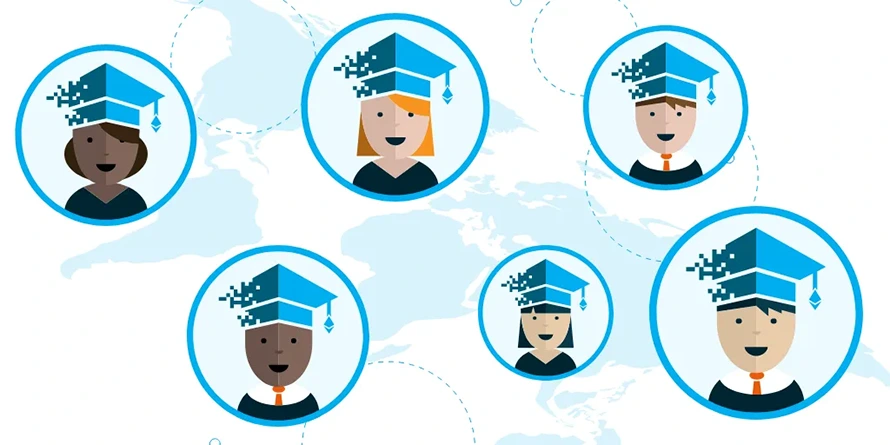
Webinar content
1. Why choose a blockchain technology? The European project fr.EBSI
Pierre BOULET, Digital Transformation Vice President, University of Lille & Perrine de COETLOGON, University of Lille, fr.EBSI & DemAttestUlille coordinator, Board Member at Open Education Global, representative of France at the European Blockchain Partnership – EBSI
2. Digital transformation of diplomas: from the request of the academic department to the choice of a European blockchain solution
Bénédicte GAUTIER, Director of the Academic Department, University of Lille
3. DemAttestUlille results: dematerialized credentials for the University of Lille
Imane CHAABI, Deputy Director of Student Affairs & Tony DELETTREZ, Head of Academic Services Faculty of Political and Social Sciences
4. Advantages of blockchain standards for Digital Credentials solutions
Luc JARRY-LACOMBE, CEO and co-founder of Blockchain Certified Data – BCdiploma
5. Questions and answers
Opening up exchanges
Perrine de COETLOGON, University of Lille, fr.EBSI & DemAttestUlille coordinator, Board Member at Open Education Global, representative of France at the European Blockchain Partnership – EBSI:
Hello everyone. I have the pleasure to welcome you for this webinar on the news of the European Blockchain Partnership – France, and more particularly dedicated to the “diploma” use case. Today, we will discuss how the University of Lille is digitally transforming its education system and issuing digital credentials of achievement for diplomas and certificates.

1. Why choose a blockchain technology? The European project fr.EBSI
Contribution of Pierre BOULET, Digital Transformation Vice President, University of Lille. Hello everyone. Why transform the function of diploma issuing in a university?
The objective is, first of all, to allow students to benefit from better professional integration and to be able to easily share their diplomas on social networks. The micro credentials examples we issue is automatic, translated into French and English, which makes it easier to apply for international jobs than with French diplomas.
It’s also about graduating faster through a digital process. For the institution, the modernization of operations should allow saving time in responding to requests for verification of diplomas that come from many partners or employers.
This system should also increase the value of diplomas by fighting fraud in this area. Finally, in the long run, the institution could save money, as printing paper diplomas costs more than printing digital ones. This could result in lower operating costs in our institution in the future.
Regarding the technology to be used, we started investigating and observing the market in 2018. It turns out that blockchain technologies fully meet our needs, particularly in terms of security, non-forgery of diplomas, and their durability over time.
The question of the verifiability of the validity of diplomas by anyone also arises. Decentralized technologies make it easy to validate these diplomas issued by a large number of actors, in standard formats.
This is why the European Blockchain Partnership identified this as the first use case to be implemented. Our diplomas will be published tomorrow on the EBSI European blockchain, which is not yet in production. We are working on it, within the framework of the fr.EBSI project.
We recently issued our first 14,561 diploma certificates, and we were able to verify that students appreciate this sharing method.

Contribution of Perrine de COETLOGON. The European Blockchain Partnership involves 29 member states, having signed a joint initiative with the European Commission in April 2018. The purpose was to meet several objectives, including:
(i) To comply with international standards by testing a technological innovation;
(ii) To build an infrastructure corresponding to all the European achievements, especially on the ecological level;
(iii) To ensure an increase in the skills of computer scientists and developers. A project funded through Erasmus+ was won by the University of Lyon-I on this subject.
In this European blockchain partnership, we are testing 7 different use cases, and the first one to directly affect people is therefore about diplomas.
We now come to digital transformation, with Bénédicte Gautier.
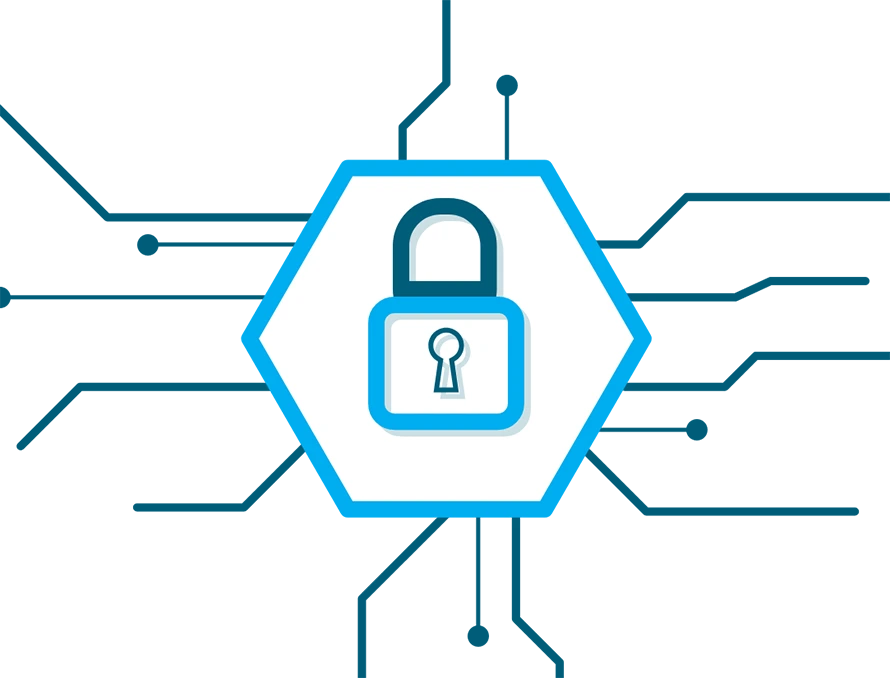
2. Digital transformation of diplomas: from the request of the academic department to the choice of a European blockchain solution
Contribution of Bénédicte GAUTIER, Director of the Academic Department, University of Lille. This dematerialization project is part of a larger dynamic, which has been part of our work in the field of education for many years. Many procedures, such as online administrative registration or the transfer of student files, for example, have been dematerialized in the past. The process now continues with the diploma certificates.
These are not common documents. Until now, it has not been really possible to get rid of the paper document in this matter. Nevertheless, we have decided to move towards dematerialization in anticipation of changes in the regulatory corpus on this subject.
The current situation allows us to match a need and a technology, with the emergence of blockchain technology. We then considered it relevant to our problem:
How to respond to the thousands of requests that our service receives for diploma authentication?
The tamper-proof nature of the blockchain solution will enable us to move forward on this issue.
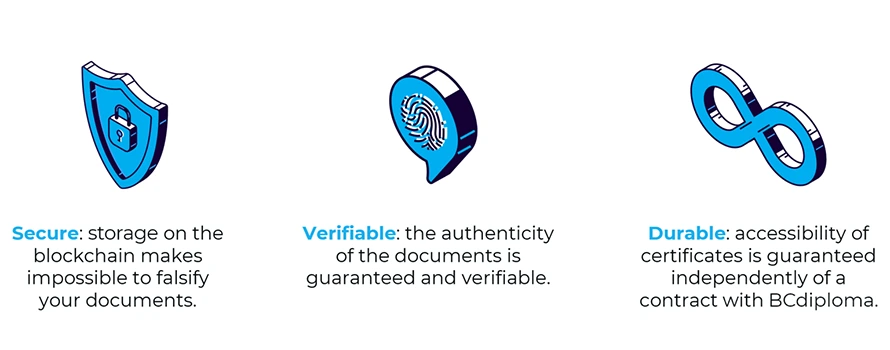
Furthermore, the institution and the student are at the center of data control. We are working within a very specific GDPR framework.
The project itself, in University of Lille, required different stages. First, it was necessary to determine:
A/ The information presented on the dematerialized credential
This information is as follows:
- Technical, with the title of the diploma, the field, the honors, the course, the specialty, the credit option, in compliance with the regulatory framework and a translation into English commonly requested. I would like to point out that today, the regulatory corpus does not provide for an administrative act drafted in French to also be issued in another language. We had to work ourselves on these translation elements, which are not communicated to us by the Ministry.
- Individuals: last name, first name, date and place of birth, INE number.
B/ Data extractions from the university’s management software (APOGEE)
These extractions provide the variable data.
C/ The design of the Digital Credentials
The graphics, the logo, the color or the font:
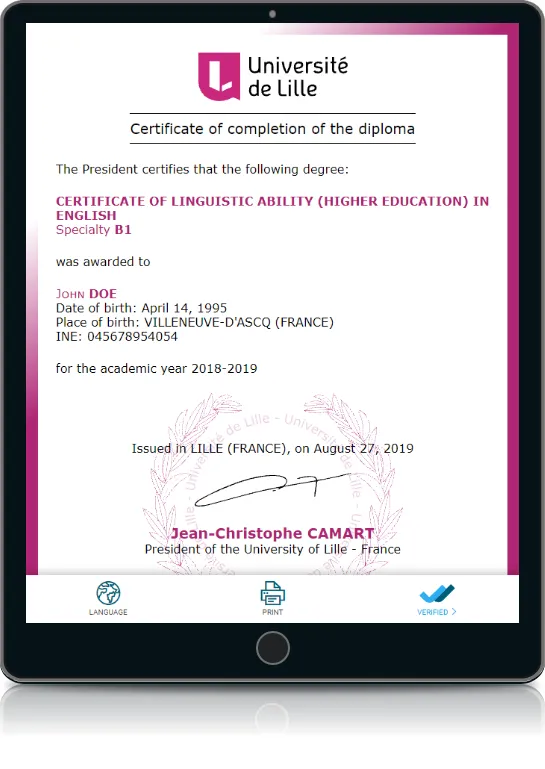
Contribution of Imane CHAABI, Deputy Director of Student Affairs, University of Lille. Thereafter, the steps were as follows:
D/ To validate the interoperability between the university’s management system and the blockchain credentialing framework
The information from APOGEE (university’s management software) and sent via the API to the blockchain (via BCdiploma software) concerns only the data of students who:
- Are admitted to one or more diplomas, with jury deliberations closed.
- Present a valid administrative file.
It was also necessary to allow for the revocation of Digital Credentials, if some elements of the deliberations were questioned, particularly for disciplinary reasons.
E/ To declare the project to the University of Lille’s personal data processing registry, for RGPD purposes
Students who receive these Digital Credentials examples know exactly what data the university has transmitted through the API, how long that information will last, and who owns the information – i.e. the University of Lille.
F/ To validate the emailing and information distribution process
We considered that our target was graduate students, who will probably no longer have access to their institutional email box in the future. We have therefore doubled this sending of Digital Credentials on personal email addresses, with synthetic explanations allowing to proceed us to pedagogy on this new blockchain technology.
The deployment takes place in various phases. In September 2020, the first 258 CLES recipients received initial certificates. Then, in October 2021, 14,561 recipients received their digital credentials for graduation.
For the time being, this project is very concentrated around Education, but deliberations are nevertheless taking place in the components. We hope that this service will quickly be decentralized to these components. This is why we have been working on an interface that should soon allow certificates to be sent directly by referents in the components.
I now hand over to Tony DELETTREZ, head of the School of Legal, Political and Social Sciences.
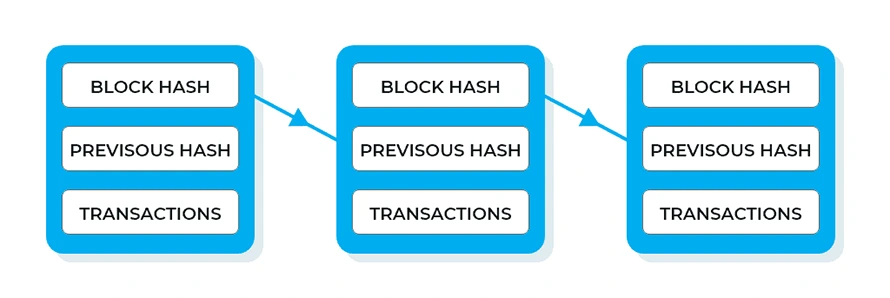
3. DemAttestUlille results: dematerialized credentials for the University of Lille
Contribution of Tony DELETTREZ, Head of Academic Services University of Political and Social Sciences.
We were indeed quickly associated with this project, about a year ago, and the Faculty of Political and Social Sciences wished to participate in the scheme, in close collaboration with the Academic Services.
This faculty includes about 8,500 students. Each year we have about 1,300 Bachelor’s graduates, about 1,000 Master’s graduates and a few hundred university graduates. There are 3 Bachelor’s degrees and 12 Master’s degrees, with 40 study paths. Our mastery of the APOGEE tool (university’s management software) allows us to join this blockchain project, with reliable and secure information to transmit.
These numerous paths are not without consequences on our daily work, and on the management of paper files, numerous in our services. A major difficulty is the storage of these archived documents. Therefore, their dematerialization must be initiated. Blockchain technology allows us to dematerialize the storage indefinitely, and participates in the process undertaken on this subject.
This dematerialization allows us to have documents available to students in identified places, and simplified management of archives for us.
In the practice of the teams, we are regularly asked, as is the case with the Academic Department, to respond to numerous requests. Responding to these requests represents a significant workload, and the dematerialized certificate should help reduce this number of requests, since students will now have access to their certificate certified by the institution.
Team support remains to be deployed. The component that I represent will be asked to use less fixed data in 2021, since the deliberations are done in the components. Therefore, I will have to train my colleagues to draw up a procedure to identify which certificates can be generated and when. The objective is to reduce the generation time as much as possible. Ideally, the certificates should be generated as soon as the deliberations are over. The student would then benefit greatly, as they would be able to use their certification as soon as the jury has made a decision on their situation.
We will have to assist the teams to issue the certificates as quickly as possible, and eventually, revoke them if necessary. Of course, we must be part of a continuous improvement process, with all departments, such as we have been doing for several months, to optimize the process.
We are very optimistic about this necessary and future progress.
Contribution of Perrine de COETLOGON. You can see that work has been done on digital transformation within the university, both at the central administration and in a pilot component. An initial test was conducted on the CLES – Certificate in Foreign Languages for Higher Education. This test allowed us to set up the entire approach, in particular in terms of GDPR, and to inform the players on this ongoing project.
We will now hand over to Luc JARRY-LACOMBE, to talk more specifically about blockchain technology, and then we will hear from Eric MIELKE, Director of U-Link, to talk about the link with the socio-economic world. In particular, the University of Lille has developed a platform, Lilagora, aimed at bringing together former students and disseminating job ads.
In total, 23 people from 5 different directions of the university were involved in this transformation project to reach the first step that we have managed to achieve in recent days.

4. Advantages of blockchain standards for Digital Credentials solutions
Contribution of Luc JARRY-LACOMBE, cofounder & CEO @BCdiploma. Let me briefly introduce myself, I am co-founder of Blockchain Certified Data, a company that publishes the BCdiploma solution. I am here today to talk about the success of this first step of the DemAttestUlille project, as well as the fr.EBSI project. In both projects, the BCdiploma blockchain solution is used to set up, issue and share Digital Credentials.
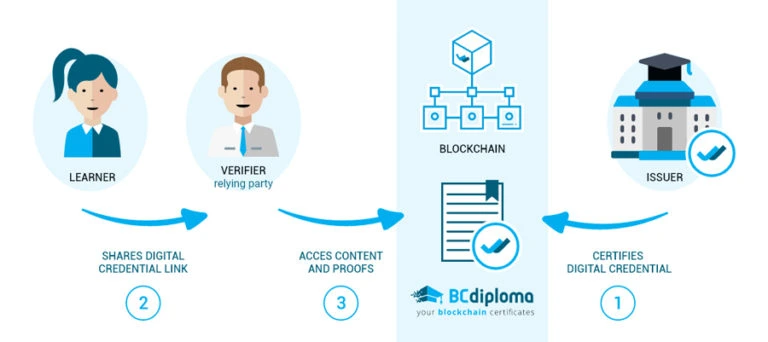
Both projects are very closely linked. For DemAttestUlille, we work a lot with the Academic staff and the IT team of the University of Lille, and for the fr.EBSI project, we are technical operators of the French governmental project on the European blockchain EBSI, also led by the University of Lille. These two projects are therefore merging, as the University of Lille will be one of the first active participants for diploma use on the European blockchain EBSI.
Furthermore, I would like to point out that since 2018, we have developed, patented and implemented in 120 institutions in 18 countries a solution to authenticate and store data in a decentralized environment, intending to make it accessible with one click in the digital world. In this context, we dematerialize evidentiary credentials so that they are tamper-proof. This is a transposition of the old paper diplomas to the digital world. This transposition adapts to smartphones or professional social networks, like a web page.
Our technical job is to guarantee that all the data viewed on screen is authentic, and thus comes from a verifiable data source in a blockchain environment. The blockchain environment itself presents all the evidence of the authenticity of this data.
I emphasize that in this area of digital credentials, there are three main players:
- The graduate student, to whom we provide a service;
- The issuer, i.e. the University of Lille;
- The recruiter, to whom the document is presented. For the latter, the user path must be very simple to ensure the authenticity of the document in one click.

Concerning the DemAttestUlille project, I would like to highlight that we are talking about a cutting-edge field, and the University of Lille represents one of the most advanced institutions in the world in the realization of large-scale blockchain projects, with W3C-type open standards.
It is therefore appropriate to include this project in the first implementations of the new W3C Verifiable Credentials standard. These standards define how we will be able to exchange data with evidential value in the future, with a standardized system. The European Commission is appropriating this standard as part of its EBSI community blockchain project. As far as we are concerned, we are implementing it here for the first time.
Everything that has been done with the University of Lille has been designed for automation from the APOGEE software, and has been designed to be interoperable with Europass and the national platforms.
Here is a QR Code on the screen, allowing you to access a test blockchain and visualize the power of this tool.
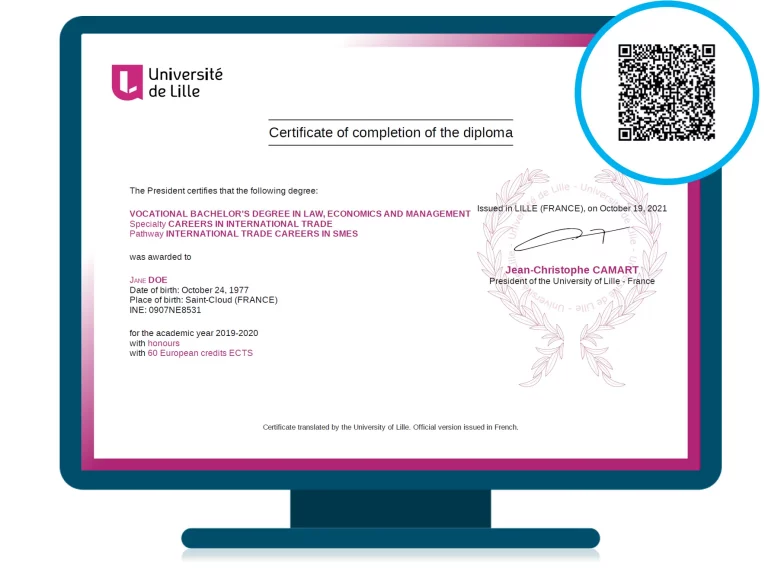
Let’s now talk about the fr.EBSI project. EBSI projects have a very interesting dimension, around the notion of “self-sovereign identity”. The idea is to be able to simultaneously present identifiers with verifiable titles, and to share them freely. The underlying philosophy here is that the data belongs to the data subject, and that the data should therefore be able to be presented without relying on centralized underlying.
Finally, we are also actively working on the wallet concept. Once digital credentials are issued, the question arises of allowing people to store this information throughout their lives in a decentralized environment. A student would therefore retain control of their wallet throughout their life, as it would be linked to their person and their diplomas. This field will concern us all in the years to come, and the European Commission is asking the States to take a position before 2023 to establish what will be the wallet, i.e. the digital wallet, of each citizen.
Moreover, one of the objectives of the fr.EBSI project is to give the opportunity to all institutions wishing to test it. We will offer use cases and tests to many public institutions next year, as part of their digital transformation.

Contribution of Éric MIELKE, Director of U-Link, University of Lille.
With Lilagora, the University of Lille launched its professional digital network a few years ago. This network serves a variety of audiences, including:
- Students and alumni;
- Partners, i.e. companies or associations that offer jobs or internships.
Indeed, we observe that recruitment methods have changed in recent years. Paper applications are gradually giving way to e-recruitment and e-reputation. Today, approximately 20% of the resumes sent by candidates are characterized by errors in their background and diplomas. Thus, what is proposed today allows recruiters to avoid using firms to contact university schools to verify the veracity of the diplomas obtained.
Lilagora is also complementary to a network like LinkedIn, with a Tech resume section. The student can import the link for the employer to access in one click the digital certificate of diploma.
For the past three years, Lilagora has had nearly 37,000 voluntarily registered members. This network makes it possible to develop a durable and profitable link for all the players.
Conclusion by Perrine de COETLOGON:
To conclude, we are indeed trying to simplify the student experience, in the sharing of curricula and diplomas. For the university, this project is also expected to save money, both financially and environmentally. Therefore, digital is a solution, and we hope to contribute to more digital sobriety. The blockchain brings the authenticity block that the internet was missing. That’s what makes this solution so interesting.

5. Questions
a. For BCdiploma, which wallet did you use? Have you done a benchmark?
Perrine de COETLOGON: Let me remind you that our digital identity is currently regulated by eIDAS, a European regulation. France is currently implementing electronic identity cards, and in the years to come, we will all have digital wallets with various identity elements. However, this wallet raises several questions.
Luc JARRY-LACOMBE: It is important to realize that many manufacturers are currently working on these wallets, since the institutional stakes are major. We started this work with an academic view, through the diploma to be stored. However, this wallet works beyond university enrollment. We are working on this angle of easy adoption for all graduates and citizens, hiding what is the complex technology of the blockchain, which is not relevant to the end-user for large-scale evolution.
b. Are fr.EBSI and DemAttestULille competing projects with diplome.gouv.fr?
Pierre BOULET: No, these are complementary projects. Moreover, diplome.gouv.fr does not currently include higher education diplomas. The practices are not the same, particularly concerning diplomas obtained abroad. Our EBSI project is part of this framework of international mobilities, and allows different states to exchange data in full confidence, using international standards.
The same applies to Europass. EBSI is also a European initiative, and tries to be compatible with this Europass project.
I would add that EBSI not only incorporates the blockchain infrastructure for sharing, but also registers that certify issuers. BCdiploma carries out this certification work, and I had to prove myself that I represented the University of Lille, a training institute recognized and accredited by the Ministry of Higher Education. I had to provide proofs on this matter.
In the future, EBSI will include registers of issuers licensed by various governments. The latter will therefore be responsible for updating these registers.
Perrine de COETLOGON: I would also like to add that we had to think early on about the possible interactions between our project and the Passport Orientation Formation Compétences that is being created in the Formation (training) accounts of the French workforce. In the future, all higher education institutions in France will have to transfer their data to a wallet where French people can find them.
c. Will these diplomas be visible in CFN – Digital Safe similar to Digiposte?
Luc JARRY-LACOMBE: Absolutely. We replace the diploma with a URL, which is a string that can be stored in a digital vault. In reality, however, this storage will not be necessary, it will not be useful to add a security layer to this blockchain technology.
However, Digiposte could be considered as a portfolio to centralize this type of e-document.
d. What about the PC-SCOL – PEGASE project: will you be able to migrate your developments without additional costs?
Bénédicte GAUTIER: This other question asks about the PC-SCOL project, i.e. the PEGASE project, the successor of APOGEE. Today, we are working with our APOGEE database, and we are fully aware that this database will be replaced by other players in the future. However, since the objects are clearly identified, we know that they will also be handled tomorrow by PEGASE. This interoperability has already been worked on.
In addition, an interface between the database and the blockchain allows us to connect to other storage locations.
Perrine de COETLOGON: Additionally, we have developed an API in-house, and have been working on the issue of link storage. The university is required to protect its students’ data. Therefore, we needed to be able to manage the links. The original link will be stored and can be sent back to the student who lost it.
On the other hand, due to an error or fraud during the examination, it will be possible to revoke the first link and make it inaccessible.
Luc JARRY-LACOMBE: Also, the work of Lilagora’s teams allows you to store your link on alumni platforms. In addition, a common practice is to share your link as a badge on your LinkedIn profile. Finally, the work around the wallet also addresses this issue. This minimizes the risk of loss.
e. Have you tested the 2D-DOC technology?
Perrine de COETLOGON: Another question is about 2D-DOC technology. We have been funded, as far as we are concerned, to work on blockchain. However, we have of course come across 2D-DOC technology in recent years, but it is less interesting from a cryptographic point of view.
Pierre BOULET: In addition, a QR Code appears on the paper document that can be printed from the diploma, allowing you to find the original link.
The decentralized aspect is fundamental in our approach, and each institution must be able to issue diplomas that can be read by the other players. The standard aspect of the format is thus interesting, and QR codes also allow this sharing. However, blockchain is more useful when it comes to the durability of information and its unforgeability. It addresses all of our concerns.
Luc JARRY-LACOMBE: I would also like to point out that the challenge here is to store the data and its evidence on an underlying that will remain stable and unalterable for a very long period.
f. What is the cost of using Avalanche for this application?
Perrine de COETLOGON: I would like to point out that Avalanche is a blockchain that we have chosen for its low energy cost, in particular. We wanted to respect certain values related to education in our work, by not using a blockchain that generates considerable energy costs.
g. What about storing the data in the Caisse des Dépôts Skills Passport?
Luc JARRY-LACOMBE: I also wanted to answer a question about the obligation, since July 2021, for all certifiers and training organizations with RNCP titles to transmit data to Caisse des Dépôts. In this context, we propose automatic data flows from the issued blockchain certificates to this vault.
